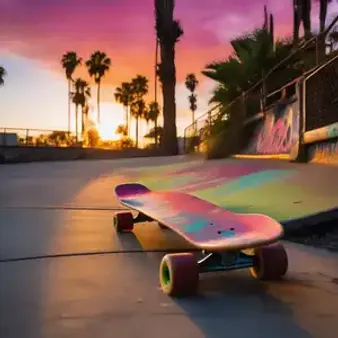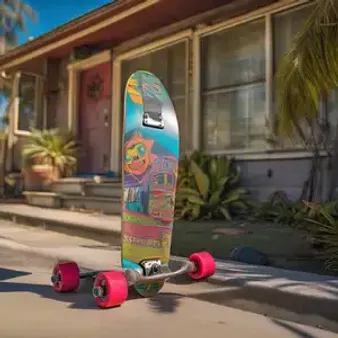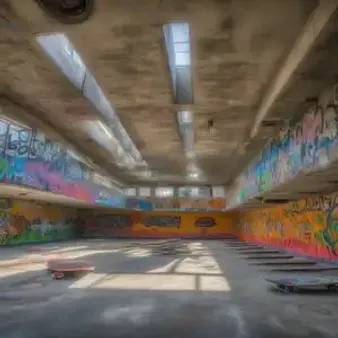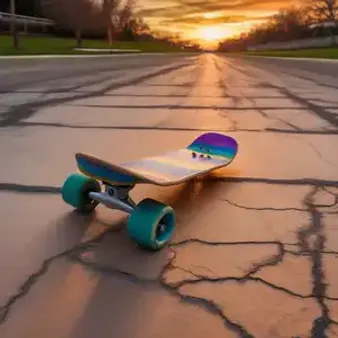Table of Contents
Welcome to kizworld, your ultimate guide to the fascinating world of skateboards from the 1970s! In this era of bell bottoms and disco, skateboarding emerged as a thrilling subculture, captivating the hearts of youth with its rebellious spirit and innovative tricks. Join us as we explore the history, designs, and cultural impact of skateboards from the 1970s, a period that shaped the sport we know and love today.
Aspect | Details |
|---|---|
Materials | Wooden decks, clay wheels, steel trucks |
Popular Brands | Bahne, Makaha, Dogtown |
Key Innovations | Urethane wheels, improved truck designs |
Cultural Impact | Rise of skateboarding as a subculture, Zephyr Competition Team, vert skateboarding |
The Birth of Skateboarding in the 1970s
The 1970s weren't just about disco and bell bottoms. It's when skateboarding really took off! Imagine this: kids tired of their clunky clay wheels wanted something faster, something that felt like surfing on concrete. That's where urethane wheels came in, a total game-changer. Suddenly, skateboards were smoother, faster, and way more fun. It was like going from a tricycle to a race car! This innovation led to a boom in skateboarding's popularity, with kids everywhere eager to try out these new and improved boards.
This wasn't just about the tech; it was about style, too. Skateboarders in the 70s were like artists, carving up empty pools and sidewalks with their moves. They weren't afraid to experiment, inventing tricks that would become skateboarding staples - think ollies and kickflips. Remember, these were the days before fancy skateparks; they had to get creative! They turned everyday spaces into their playgrounds, pushing the limits of what was possible on a skateboard. Check out this article about how to train like a skateboarder for more insights.
Element | Description |
|---|---|
Decks | Typically made of wood, often maple plywood |
Trucks | Metal axles that connect the wheels to the deck |
Wheels | Early 70s: Clay, then transitioned to urethane for smoother rides |
This DIY spirit wasn't just about the tricks; it was about the whole skateboarding culture. Groups like the Zephyr Competition Team, also known as the Z-Boys, became legends. They weren't just amazing skaters; they had an attitude, a style that screamed rebellion and freedom. Just like musicians and artists have their own scenes, skateboarding was becoming a culture of its own. Think about it: kids making their own ramps, customizing their boards, and sharing tips and tricks. It was all about creativity, pushing boundaries, and having a blast while doing it. For those interested in the evolution of skateboarding, this article about vert skateboarding offers a fascinating perspective.
The Birth of Skateboarding in the 1970s
Iconic Skateboards from the 1970s
The 1970s was a time of radical change for skateboards, and some of the boards from that era are still legendary today. We're talking about the boards that helped shape the sport, the ones that kids dreamed of owning!
The Bahne Skateboard
One of the big names was Bahne. They were known for their super sturdy decks made from maple plywood. Imagine a board that could handle all the crazy tricks and jumps you could throw at it! Bahne boards were built to last, and they were a favorite among skaters who wanted to push their limits. They were also known for their cool designs, often featuring bright colors and bold graphics. They were like moving works of art! For more on skateboarding basics, check out this article on how to get started with skateboarding.
Feature | Details |
|---|---|
Deck Material | Maple Plywood |
Durability | High, built for intense skateboarding |
Design | Often brightly colored with bold graphics |
The Makaha Skateboard
Then there was Makaha, another company that made waves in the 70s. They were all about capturing the feeling of surfing on concrete. Their boards often featured designs inspired by the ocean, like waves and sunsets. Think of it like bringing the beach to the streets! Makaha boards were known for their smooth rides, making them perfect for cruising and carving. If you are interested in other types of boards, check out this article on surf skateboards.
These boards weren't just pieces of wood; they were symbols of a whole movement. Owning a Bahne or a Makaha was like joining a club, a tribe of kids who loved the freedom and creativity of skateboarding. It wasn't just about the boards themselves, it was about the feeling they gave you - the feeling of being part of something cool and exciting!
Iconic Skateboards from the 1970s
Skateboarding Culture in the 1970s
The 1970s was like a wild party for skateboarding. It wasn't just about riding; it was about expressing yourself, being a bit rebellious, and pushing the limits. Think of it like a secret club where everyone was trying to outdo each other with awesome tricks. Groups like the Z-Boys, with their signature swagger, became skateboarding royalty. They weren't afraid to experiment, turning empty swimming pools and sidewalks into their own personal skate parks. It was a time of pure creativity, where every kid with a skateboard was an artist, carving their own lines and inventing new moves. It was about the thrill of the ride, the camaraderie, and the sheer joy of defying gravity with style. Wanna learn how to do an ollie? It all started back then!
Skateboarding Culture in the 1970s
The Legacy of 1970s Skateboards
The 1970s weren't just a cool time for skateboarding; they were like the Big Bang that started it all. Those old-school boards with their colorful designs and sturdy builds? They're like the grandpas of the skateboards we ride today. Think about it: those pioneers back then, they were like mad scientists, experimenting with new tricks and turning everyday places into their own skateparks. They laid the foundation, man! Without them, skateboarding wouldn't be the awesome global phenomenon it is now. It's like, they planted the seed, and now we're reaping the benefits with all the cool boards and skateparks we have. If you're curious about how skateboarding evolved, check out this article on vert skateboarding. It's a wild ride!
The Legacy of 1970s Skateboards
Final Thought
Skateboards from the 1970s represent not just a mode of transportation but a cultural phenomenon that continues to inspire generations of skaters. From the iconic designs to the pioneers who pushed the boundaries of the sport, the legacy of 1970s skateboards is undeniable. As we look back on this era, we appreciate the innovation, passion, and creativity that shaped skateboarding into the global phenomenon it is today.